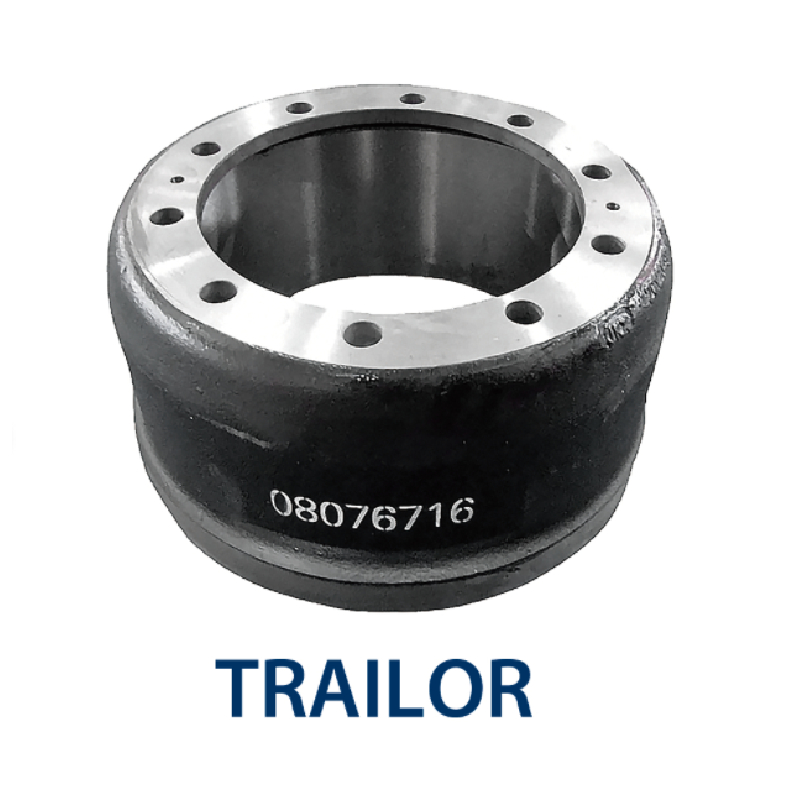Sep . 02, 2024 06:03 Back to list
What Happens When Brake Drums Get Hot | Understanding Brake Drum Performance
What Happens When Brake Drums Get Hot?
Braking systems are a crucial component of vehicle safety, and understanding their functioning is essential for every driver. Brake drums play a significant role in this system, especially in older vehicles and some designs. These components endure a remarkable amount of stress and heat during everyday driving. But what happens when brake drums get hot, and why is it important to monitor their temperature?
When a driver applies the brakes, friction is generated between the brake shoes and the inner surface of the brake drum. This friction converts kinetic energy into thermal energy, causing the brake drums to heat up. Under normal conditions, the drums can handle moderate rises in temperature. However, excessive heat can lead to several complications that impact both performance and safety.
One of the most immediate consequences of overheated brake drums is brake fade. This phenomenon occurs when the brake linings become less effective due to high temperatures. The excessive heat can cause the brake fluid to boil, leading to vapor formation. Since vapor is compressible, this can result in a spongy brake pedal feel, diminished braking power, and an increased stopping distance. In critical situations, brake fade can lead to catastrophic consequences.
Moreover, excessive heat can cause warping of the brake drums. When the metal heats up, it can expand unevenly, leading to a misshapen drum. A warped brake drum can lead to pulsation during braking, resulting in an uncomfortable feeling for drivers and potential loss of control. This issue necessitates immediate replacement or resurfacing of the drum, which can be an expensive repair.
what happens when brake drums get hot

Additionally, high temperatures can accelerate wear on brake components. Brake linings are designed to withstand a specific temperature range. When heat exceeds this range, the lining material can break down more quickly, leading to the need for premature replacement. This not only affects the cost of maintenance but also the reliability of the braking system.
It's also worth mentioning that prolonged overheating can lead to structural damage to the brake drum itself. In severe cases, the drum can crack or fail entirely, resulting in the loss of braking capabilities. Regular inspection of brake components, especially in high-load or hilly driving conditions, is crucial.
To mitigate the risk of overheating, it’s vital for drivers to understand their braking habits. Frequent hard stops, towing heavy loads, or driving in mountainous terrains can significantly elevate brake temperatures. Utilizing engine braking and modulating brake application can help maintain a more stable temperature within the braking system.
In conclusion, understanding what happens when brake drums get hot is essential for safe driving. The interplay between heat and friction is a double-edged sword; while it is necessary for effective braking, excessive heat can lead to a range of dangerous issues. Regular maintenance, awareness of driving conditions, and proper braking techniques will contribute to the longevity and efficacy of a vehicle's braking system. Always prioritize safety and ensure your brakes are in optimal condition to keep yourself and others safe on the road.
-
Scania Brake Drums: OEM Quality for Optimal Safety & Durability
NewsAug.16,2025
-
R.V.I: Advanced Remote Visual Inspection for Precision
NewsAug.15,2025
-
Discover HYUNDA: Innovative Vehicles, Equipment & Solutions
NewsAug.14,2025
-
R.V.I: Unlock Advanced Insights & Real-time Performance
NewsAug.13,2025
-
Kamaz Brake Drum: Durable & Reliable for Heavy Duty Trucks
NewsAug.12,2025
-
Heavy Duty Iveco Brake Drum - Premium Quality & Safety
NewsAug.11,2025
